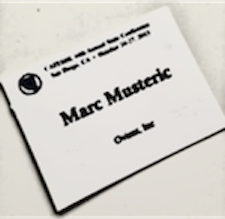These 5 Websites have helped us grow our business. I have no affiliation with any of these companies, but they make excellent products that I have used for at least a year. I have used some of these services for 5+ years.
1. Eventbrite.com
Eventbrite helps you manage registrations for events. We have been using Eventbrite to manage course registrations for years. The service lets you accept credit cards, create discount codes, and manage multiple registration types (early bird, general admission, etc.) I love this site.
2. Meetup.com
Meetup is designed to connect people with similar interests online so that they can meet in person. We use Meetup to help us build community around our services. Our Meetups are almost always free. We use them as an opportunity to offer pro bono services to the community and as a way to preview upcoming paid classes. We may, for example, schedule a free Meetup a month or two before we offer a paid course.
3. Createspace.com
Createspace is an Amazon.com company that lets you self-publish your own books. If you have written a lot of your own materials and own the copyright to them (this is essential), why not create your own textbook? The Createspace service is relatively easy to use. Even if you do not sell many copies of your book, it is probably still worth the effort. The service lets you order author copies at a discount. Giving away a free copy of your book or even simply mentioning your book to prospective students can result in a huge marketing bump. Also, ordering author copies may be cheaper (and less hassle) than printing and reprinting your teaching materials for each of your students.
4. Mailchimp.com
We have found this to be an excellent tool for email marketing. It allows you to manage your email lists, create beautifully-styled emails, and track email response rates.
5. Store.apple.com
I hate to say it, but once we switched to Macs, almost all of our computer headaches disappeared.
What websites have helped you grow your business?

 I recently attended the 2013 CATESOL (California Teachers of English to Speakers of Other Languages) conference in San Diego. Total cost to attend, including admission for two, hotel, travel expenses, and food? $1000. This is expensive…but also on the cheap end in terms of what many conferences charge.
I recently attended the 2013 CATESOL (California Teachers of English to Speakers of Other Languages) conference in San Diego. Total cost to attend, including admission for two, hotel, travel expenses, and food? $1000. This is expensive…but also on the cheap end in terms of what many conferences charge.